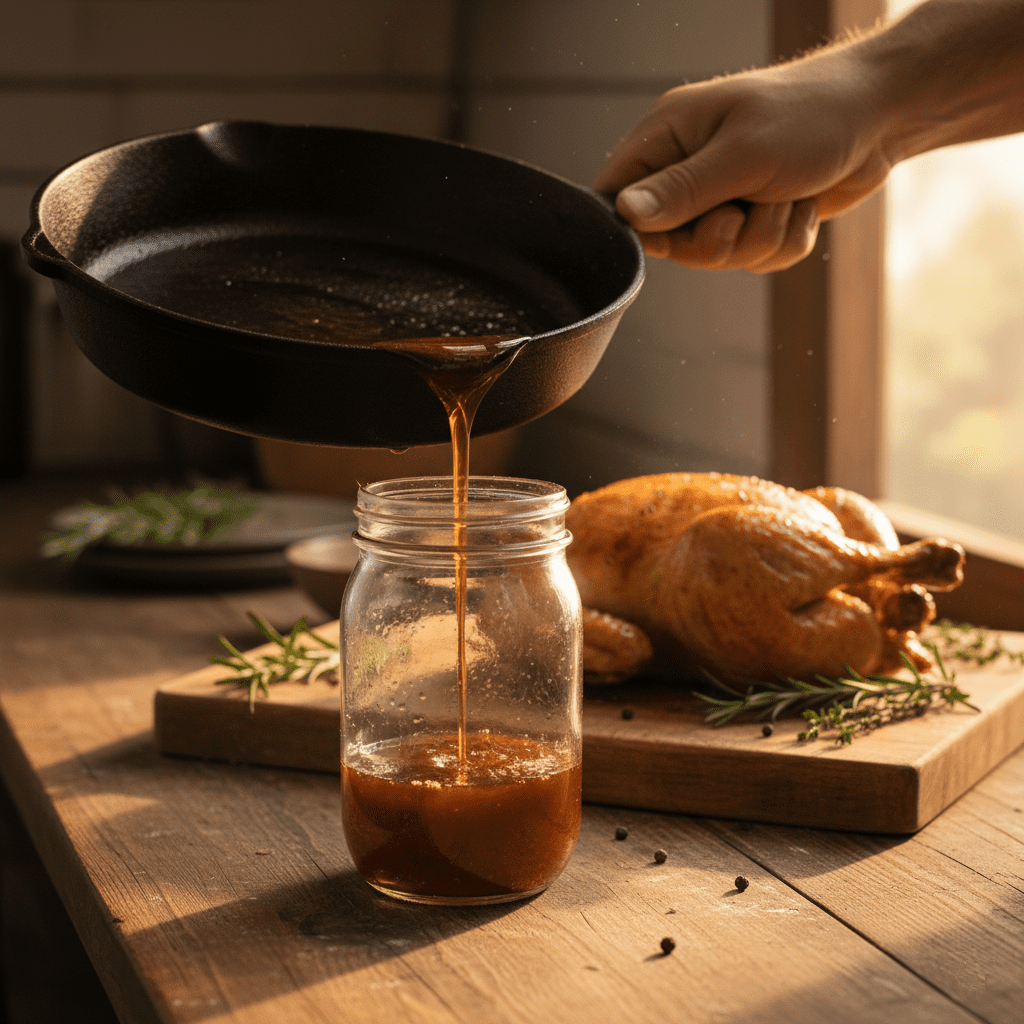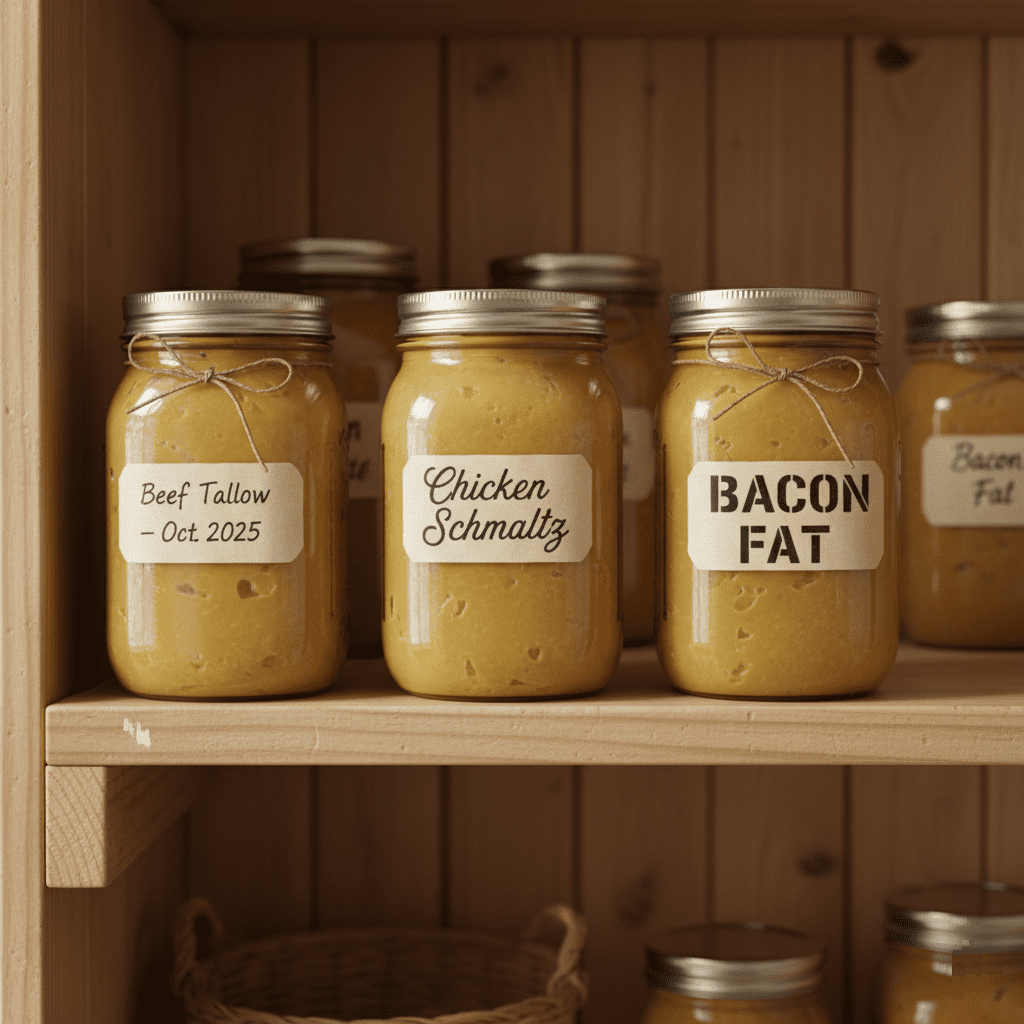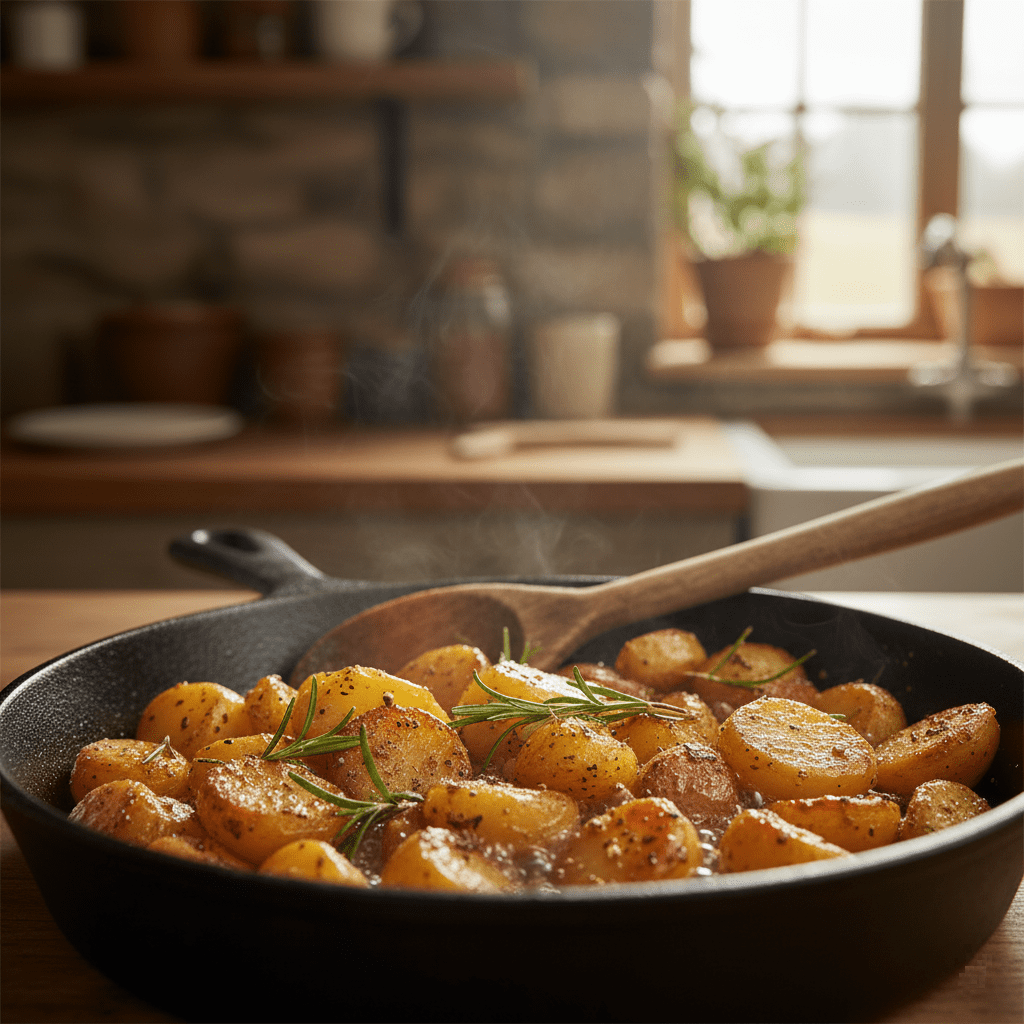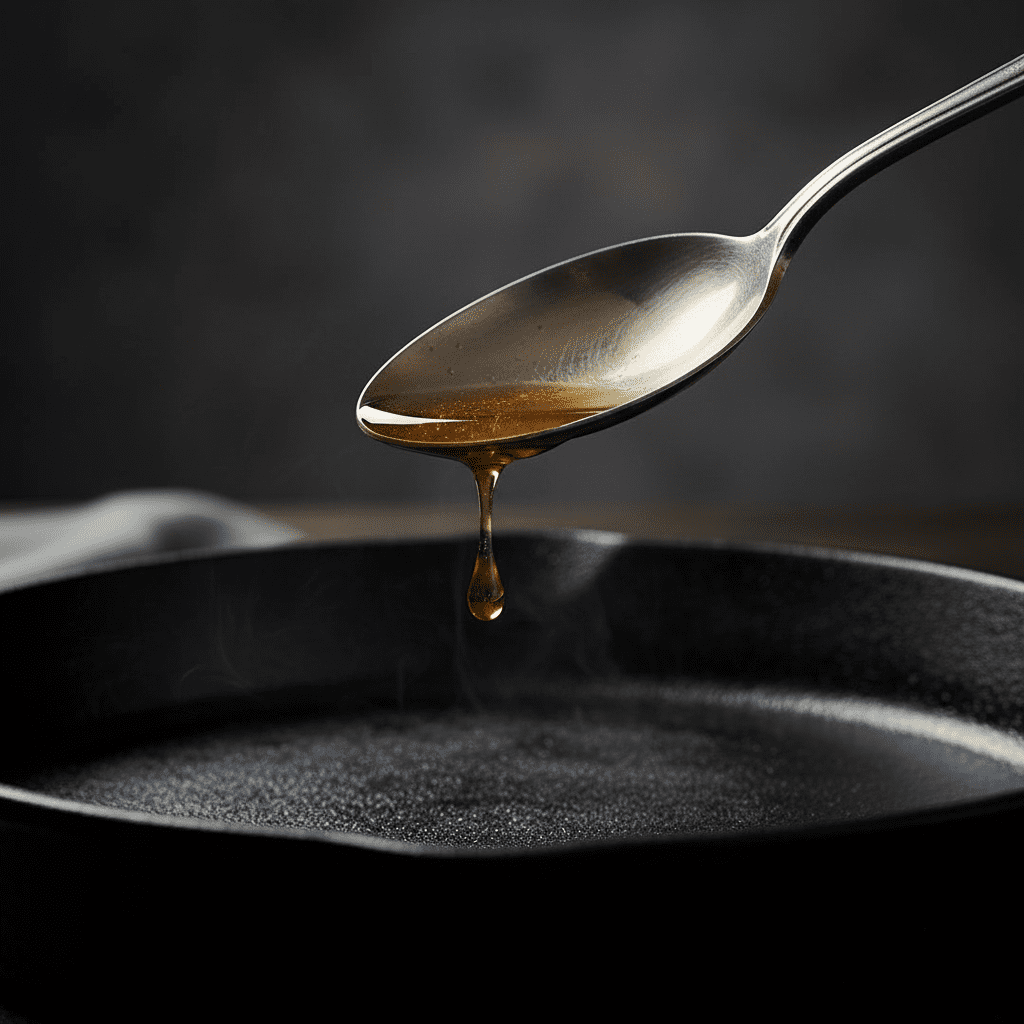“When faced with a new problem, a person should be able to analyze it, solve it, and get on with life. Not whine about it, not outsource it, and certainly not flush the solution down the drain.”
— (Paraphrasing Heinlein, because he’d be furious you’re wasting fat)
Let’s get one thing straight: fat is not the enemy.
The enemy is ignorance. The enemy is convenience masquerading as progress. The enemy is the quiet assumption that someone else—industry, government, algorithms—will take care of your survival so you don’t have to think about it.
Well, think again.
While you’re scrolling through food delivery apps, real people—past and present—are using every scrap of what they’ve got. Soldiers in foxholes rendered fat from rations to fry bread. Homesteaders saved bacon grease in coffee cans to light lamps or soothe chapped hands. Jewish grandmothers turned chicken skin into schmaltz—a golden elixir that made matzo balls float like clouds and potatoes sing like angels.
And you? You’re pouring it down the sink like it’s toxic sludge.
That’s not modern. That’s surrender.
Why Drippings Matter—Beyond Flavor
Yes, drippings make food taste better. But that’s the least of it.
Drippings are stored energy.
One tablespoon of beef tallow = 115 calories. In a crisis—blackout, job loss, supply chain collapse—that’s not trivial. It’s fuel. Unlike vegetable oils (often rancid by the time they reach your shelf), animal fats are stable, nutrient-rich, and shelf-stable when handled properly.
Drippings are culinary sovereignty.
Every time you use your own rendered fat, you opt out of the industrial food matrix. You reject seed oils engineered in labs, packaged in plastic, marketed with lies about “heart health.” Real fat—from pasture-raised animals, cooked with care—is honest. It doesn’t pretend to be something it’s not.
Drippings are respect.
An animal died so you could eat. Wasting its fat dishonors that sacrifice. Free people don’t take life lightly. They use everything—bones for broth, skin for cracklings, fat for fire and flavor. That’s not “old-fashioned.” It’s ethical.

Step 1: Capture Like a Soldier on Ration
Don’t just collect drippings—secure them.
During cooking:
- Use heavy pans (cast iron, stainless steel) that retain and distribute fat evenly.
- Avoid non-stick when rendering fat—it degrades at high heat and hides what you’re working with. You need to see the action.
After cooking:
- Let meat rest. This isn’t optional—it lets juices redistribute and allows fat to pool.
- Tilt the pan. Use a metal spoon or baster to skim the clear, golden layer off the top.
- Use a fat separator (a $6 kitchen tool that looks like a gravy pitcher with a stopper at the base). Pour pan juices in, wait 5 minutes, then open the valve to drain the watery layer—fat stays behind.
- No separator? Chill the pan in the fridge for 10 minutes. Fat solidifies on top—scoop it off cleanly.
Pro tip: Line roasting pans with heavy-duty foil. After cooking, lift the foil like a sling, let it cool slightly, then funnel the fat into storage. Cleanup? Gone. Efficiency? Maximized.
Step 2: Store Like a Quartermaster
Your drippings are now strategic reserves. Treat them accordingly.
Containers:
- Glass jars only. Plastic leaches chemicals into fat over time. Mason jars, reused pickle jars—clean, dry, airtight.
- Never use containers that held strong-smelling foods (like pickles or salsa) unless sterilized.
Labeling:
- Write the type of fat and the date: “Grass-Fed Beef Drippings – Oct 15, 2025”
- Add a note if it’s mixed (e.g., “Pork + Chicken – for frying only”)
Storage Rules:
- Refrigerator: Up to 2 months for pure fat. If it smells rancid (like old crayons or wet cardboard), toss it.
- Freezer: Indefinitely. Freeze in ice cube trays (1 cube ≈ 1 tbsp), then pop into a labeled freezer bag. Need fat for sautéing? Drop a cube in the pan—no measuring.
Critical: Strain out solids. Burnt bits, meat scraps, herbs—they accelerate spoilage. Use a fine-mesh sieve or cheesecloth. Clean fat lasts. Sloppy fat fails.

Step 3: Deploy Like a Field Chef
Now, the payoff. Here’s how to use your liquid gold:
🔸 Daily Cooking (Flavor Dominance)
- Eggs: Fry in bacon drippings. The result? Rich, savory, with a depth no butter can match.
- Vegetables: Sauté onions in beef tallow. Roast Brussels sprouts in duck fat. Suddenly, “healthy” tastes like a reward.
- Baking: Substitute drippings for shortening in pie crusts or biscuits. Beef tallow makes flakier pastry than lard.
- Popcorn: Melt chicken schmaltz, drizzle over popped corn, sprinkle with sea salt. Gourmet? No—smart.
🔸 Emergency Cooking (Survival Mode)
- No electricity? Drippings burn cleanly in oil lamps or improvised stoves.
- Ration stretching: A spoonful of tallow added to boiled grains or beans adds calories, satiety, and morale.
- Barter potential: In prolonged disruptions, fat becomes currency. People will trade for it.
🔸 Beyond the Kitchen
- Leather conditioner: Rub a dab of tallow into boots or belts.
- Skin salve: Mix with beeswax for a natural balm (historically used by frontiersmen).
- Fire starter: Soak cotton balls in drippings—water-resistant, long-burning tinder.

Debunking the Myths (Because Someone Has To)
“Animal fat is bad for your heart.”
Says who? The same agencies that pushed margarine—a plasticized oil sludge—as “healthy”? Modern research increasingly exonerates natural saturated fats. The real villains? Industrial seed oils (soybean, canola, corn) loaded with omega-6 and prone to oxidation. Your great-grandmother fried in lard and lived to 92. Coincidence?
“It’s messy and old-fashioned.”
So is changing your own oil. So is growing food. So is thinking for yourself. “Modern” doesn’t mean “better.” Often, it means “more dependent.”
“I don’t cook enough meat to bother.”
Then start. One roast chicken yields ¼ cup of schmaltz. That’s 8 servings of frying fat. Cook intentionally. Waste nothing.
The Philosophy of the Pan
This isn’t about drippings.
It’s about agency.
Every time you choose to save instead of discard, to prepare instead of panic, to use your hands and mind instead of outsourcing your survival—you declare: “I am not a consumer. I am a creator. A provider. A free person.”
Heinlein didn’t write about heroes who waited for rescue. He wrote about people who did the work. Who took responsibility. Who knew how to cook, fight, build, and think.
Saving drippings won’t win you a medal. But it’s a small act of rebellion against a culture that teaches you to be helpless.
And in a world of fragility, small acts of competence compound into unshakable resilience.
Final Orders
Next time you roast meat:
- Capture the drippings like intelligence.
- Store them like ammunition.
- Use them like a person who intends to stay free.
Because the truth is simple:
Waste is weakness. Preparedness is power. And your kitchen is your first line of defense.
Now go cook something worth saving.


1 thought on “Your Roast Chicken is Bleeding Gold—And You’re Throwing It Away”